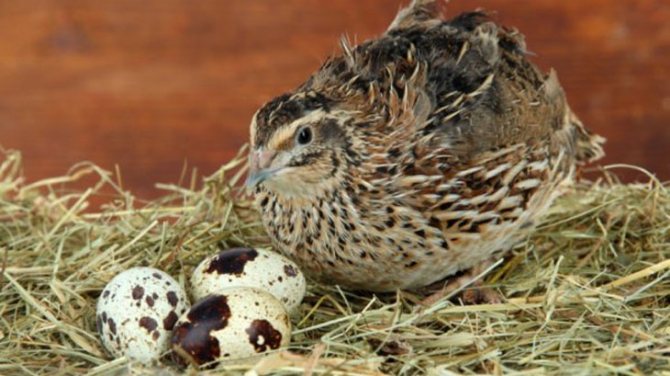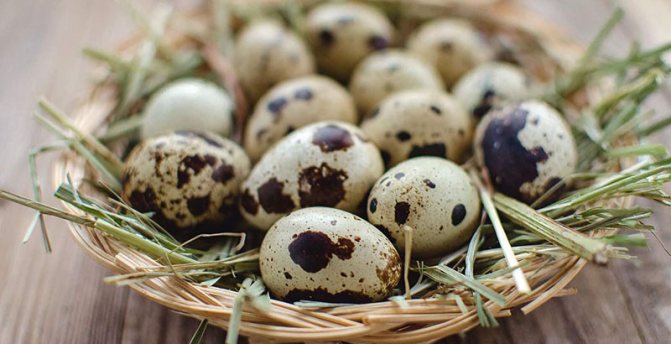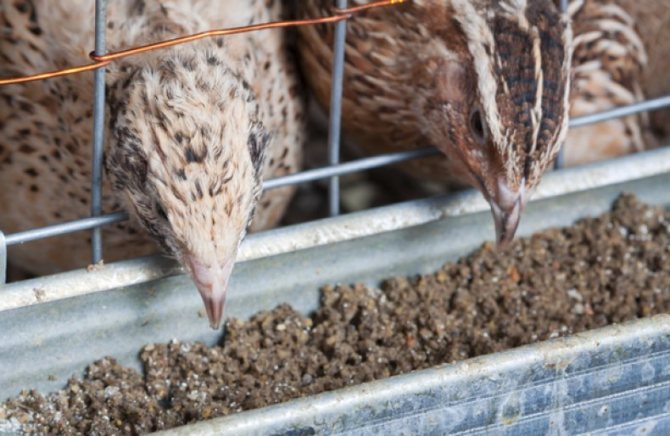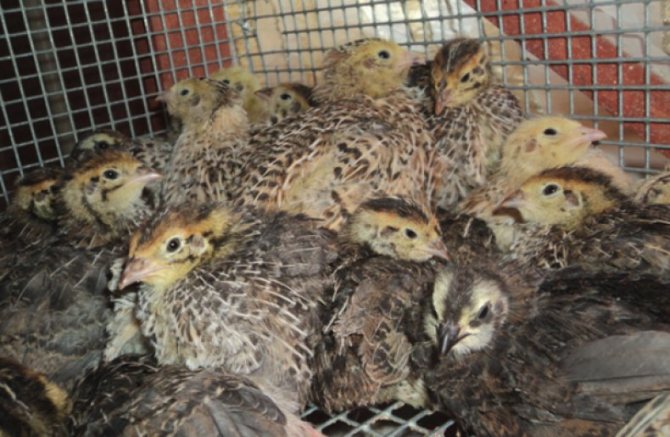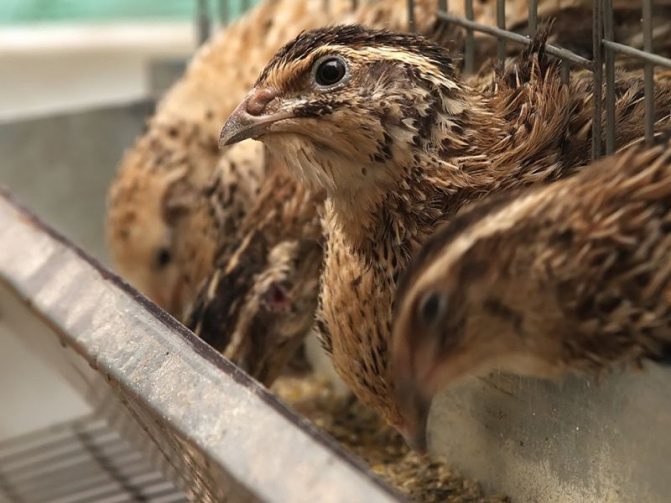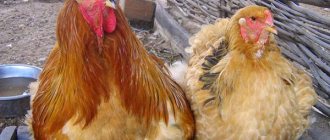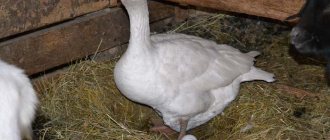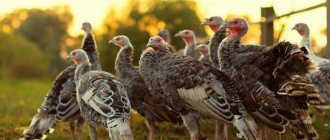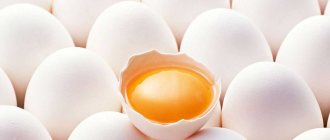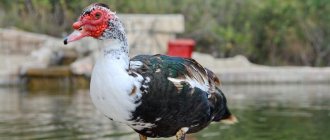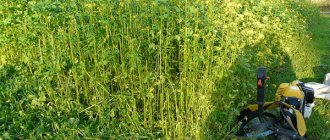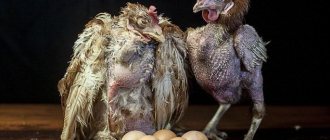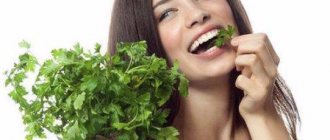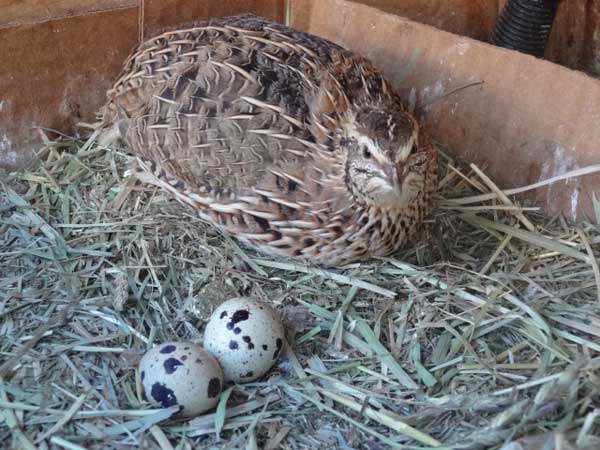
In the article we will talk about why quails do not lay, when they generally start laying eggs, how to create comfortable conditions for them to maintain and increase egg production. We will teach you to recognize in a timely manner the reasons for its decrease or absence, and ways to eliminate them. Let's talk about sanitary and hygienic standards and temperature and humidity conditions. We will describe the characteristics of representatives of different quail breeds, the features of their feeding, care, and much more.
Identification of laying quails
Laying quails are sexually mature (over 60 days old) females without health problems, which can produce from 220 to 300 eggs per year. They have optimal productivity when living in a spacious, light house in cages or on perches, provided that families are formed in the ratio of 1 quail to 2-3 females. The maximum productivity of laying hens falls on the first three years of life, but already at the end of the first year it begins to gradually decline. On average, quails produce one egg per day, the mass of which is usually 10-12 grams. Quail eggs have a firm shell of a light shade with a slight dark pigmentation. Find out about the quail business from this article.
When they start to rush
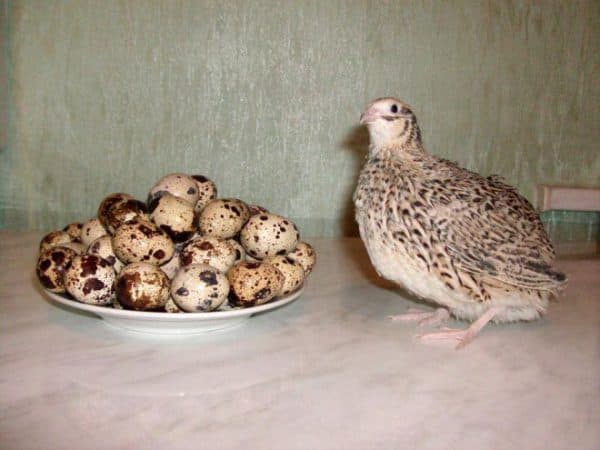

They need to be fed three times a day at the rate of approximately 30 grams of feed per adult bird.
Quails begin to lay quite early - from 40 days of age (in some breeds this period starts from 50 days of age). In the first month after the onset of sexually mature, the productivity of birds is usually low - they give no more than 8 eggs, but then it comes to normal indicators for the selected quail breed.
The peak of egg production in the presented breed falls on the age of 5-6 months. After this, the productivity of females gradually decreases, which is why it is recommended to replace them with younger birds, and send the laying hens themselves out of the required age for slaughter.
Average egg production
The productivity of a quail depends on the breed to which the bird belongs, as well as on its state of health, the quality of keeping in the poultry house. On average, these birds produce up to 25 eggs per month. Annual egg production rates for different breeds can range from 220 to 300 eggs per year. It can decrease when the bird is exposed to unfavorable external factors. This link will tell you about quail diseases and their treatment.
As egg breeds, birds usually use those quails with an average productivity of at least 260 eggs per year. If it is lower, such birds are used mainly for breeding for meat, while eggs are transferred to incubation to breed new individuals and are not used for food.
Daily number of eggs
On average, quails produce one egg per day. As a rule, they postpone it in the evening, at about the same hour. Some poultry breeds lay eggs immediately after feeding. (this is observed in quails of the "Japanese" breed). In the morning, birds rarely rush.
It must be remembered that quails usually fly for 5-6 days in a row, after which they take a break for a day or two. Such a schedule for a bird is quite natural, the breeder does not need to worry about the productivity of the laying hen in this case, it is enough just to provide her with good conditions.
When do quails start to fly?
Unlike their wild relatives, domestic quail live only up to 2 or 3 years. Wild individuals can live up to 5 years.
Wild individuals begin to lay much later, this is due to the fact that the domestic breed of layers was bred specifically for early egg-laying.
If, when breeding birds, you follow certain rules for care and feeding, then already in the second month the females will begin to rush regularly. Sexual maturity in individuals is early, since it occurs at the age of one month.
Problems with hens
Laying quails are highly susceptible to external influences. At low temperatures, constant stress, improper diet and disease, they can produce fewer eggs than is typical for their breed, or they can stop laying at all. Also, a farmer in such conditions may note a decrease in the quality of the eggs themselves: birds can produce material without shells, samples with defects, limescale. If such problems arise with the productivity of the poultry flock, the farmer should contact the veterinarian as soon as possible and, if possible, eliminate the factors that have a harmful effect on the layers. Then their productivity can be quickly restored.
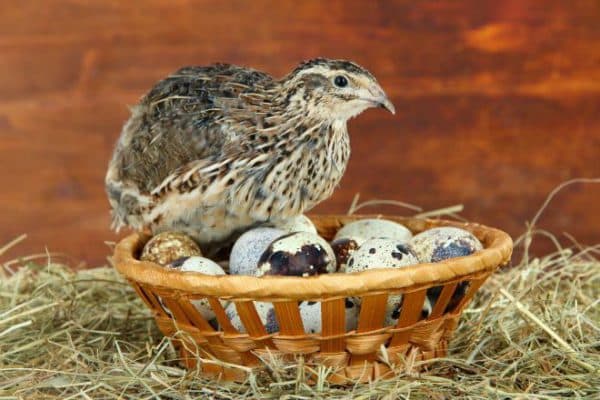

Under appropriate conditions, the female brings 20-25 pieces.
Why do they stop rushing
There are several factors due to which a sharp decrease in the productivity of layers can be observed. These include:
- Low house temperature. If it drops below +20 degrees, the quails first reduce egg production, and then stop giving eggs altogether.
- Incorrect light conditions in the house. Normally, the daylight hours for birds should be 18 hours. If this rule is not followed, females may stop rushing.
- Change of feed. May cause short-term stopping of egg production in quails. Usually occurs when the new feed does not contain the required amount of nutrients.
- Stress, overpopulation of the house, changes of the male in the bird flock. Can stop egg production for 6 days.
- Diseases and injuries of birds, moulting period.
Also, birds may stop laying due to natural aging. It should be remembered that normally quail females give eggs only for 10-30 months, while their productivity gradually decreases from the 10th month. After the end of this period, they, as a rule, cannot give viable offspring, therefore they cease to carry.
Why is there a decrease in egg production
There are also a number of factors due to which there is a decrease in quail productivity, but egg production does not stop completely. These include:
- excessive humidity in the room (reduces the productivity of birds and too dry air in the room);
- the presence of drafts in the poultry house (this factor also leads to the loss of feathers by the bird);
- transporting birds to new poultry houses;
- increased noise near poultry houses;
- lack of protein in quail food.
The factors presented tend to have a short-term effect on birds. When they are eliminated, the egg production of quails is restored. Whereas illness and injury can lead to the fact that the laying hen will lose the ability to produce testicles forever.
What problems with eggs can there be?
In young females, various egg defects can be observed. These include:
- The appearance of eggs with a thin shell or without shell in a soft bag. Indicates a lack of calcium in the body of the laying hen. It is usually eliminated by adjusting the poultry diet. Read here what to do if chicken eggs have thin shells.
- The presence of large dark spots on the shell or the complete absence of pigmentation on the shell. It is often found in young females, indicating that the oviduct is not developed.
- The presence of limescale and calcareous shells on the shell. Usually indicates an improper diet of the bird.
- Incorrect egg shape and size.It can be observed with a lack of protein in the diet of females, the presence of injuries or diseases of layers. Samples of this type should be discarded because their irregular shape leads to the development of deformities in the embryos.
- The presence of two yolks in the eggs (diagnosed by ovoscopy). Indicates an excess of protein.
Such problems are often encountered during the first month after laying hens. Normally, they disappear when correcting the diet in the second month. If such defects persist, the bird should be shown to the veterinarian. In the presence of injuries or diseases, it is better to feed it for meat and no longer use it for breeding quails.
Conditions of detention and care
Among the key factors for success in breeding a feathered farm, the creation of an appropriate microclimate in the sparrowhawk is noted:
- temperature range from +19 to + 21 ° C;
- humidity level in redistribution of 75%;
- lack of drafts.
Lack of space or too spacious cage conditions negatively affect the productivity of layers. The optimal step is to allocate an area at the rate of 10 cm² / individual. For chicks, it is recommended to organize a brooder - a warm house - with heating. An important point is the availability of appropriate lighting. Feathered pets need 16 hours of daylight. To improve egg-laying, it is necessary to equip the sparrowhawk with additional lighting devices.
When deciding what to do if the quails are not rushing, it should be borne in mind that during the molting period, you cannot influence the nature of the living creatures. The molt phase will last for about 3 weeks, after which the birds will begin to lay eggs again.
Selection of eggs for incubation
Most quails have lost their maternal instinct, only 3% of them are able to hatch eggs. Therefore, to obtain offspring, poultry farmers mainly use an incubator. For further breeding of quails, only samples not older than 7 days of regular shape, having an average weight, are used. When selecting material for setting in the incubator, preference is given to eggs with a slight pigmentation, which do not have a calcareous build-up. The best choice for quail is the "Laying" incubator. Samples with large dark spots or too light skin are not used for incubation. Also, too small specimens are not laid in the incubator, since a viable chick cannot develop in them. Read about a brooder for quails here.
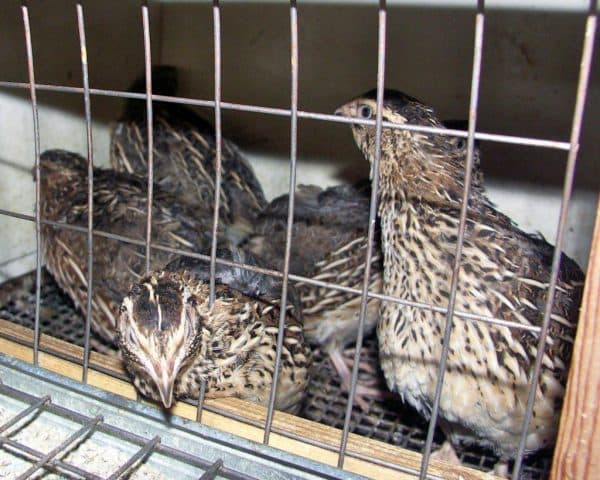

The incubation period does not exceed 17 days.
Before placing the material in the incubator, it is recommended to additionally check it with an ovoscope. Samples with the following disadvantages are subject to mandatory rejection:
- cracks in the shell;
- two yolks;
- incorrect location of the yolk (in which it is lowered to the sharp end of the shell or is attached to one of the walls);
- improper location of the air chamber (on the side or at the sharp end of the shell);
- the presence of spots on the yolk or protein.
It should also be remembered that exceptionally clean eggs can be placed in the incubator, since samples with droppings can deteriorate during incubation and infect neighboring ones with infection. If at the time of placing the material in the incubator there are not enough clean samples, you can take any that are suitable for incubation and treat them with a 3% solution of potassium permanganate.
Eggs for food
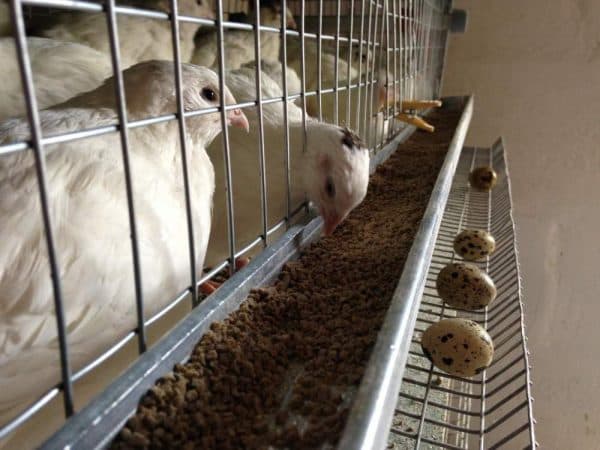

Quail eggs of our own production are very useful.
Quail testicles are a source of lysocine, vitamins A and B, calcium, magnesium and other beneficial elements. There are practically no contraindications to their use. You can eat quail eggs of the correct shape without visible damage to the shell, as well as limescale. They can be stored for up to 30 days. Quail eggs are eaten boiled, fried, raw.It is allowed to eat up to 6 pieces per day, exceeding this norm can cause allergies and other unpleasant consequences in a person. This material will tell you about the benefits of quail eggs.
This product can be given to children from one year old. It is only necessary to comply with the consumption standards for each age category. For children, it is 1-2 pieces per day. The product can be used for babies suffering from gastrointestinal diseases, anemia, as well as those undergoing a period of rehabilitation after injuries, surgical interventions, and serious infectious diseases.
The best layers
There are several highly productive laying quail breeds that even novice farmers can start. These include:
- Japanese... Laying hens of this breed begin to lay from the 45th day from hatching, give an average of 300 eggs per year. The average egg weight is 11 grams. The productivity of this breed is very dependent on the quality of the bird's nutrition - with a lack of nutrients in the feed, it will steadily decline.
- Estonian... Begin to lay eggs from 40 days of age. Laying hens of this species give up to 280 eggs per year, the average weight of which is 12 grams. The disadvantage of this breed is the increased feed consumption, which makes Estonian quails more expensive to maintain than representatives of other breeds.
- English whites... They are the most unpretentious to the conditions of detention. They give up to 280 eggs per year, weighing 11 grams each. Females of this breed begin to rush from the 41st day.
- Tuxedo... They give 280 eggs per year, each weighing 11 grams.
- Marble... The breed comes from Japanese quails, has the same high egg production - up to 300 eggs per year. Their eggs weigh 10-11 grams.
Please be aware that the performance figures shown are only for healthy birds that are well fed. Rejected females, sick quails that do not receive the necessary care, will not be able to provide you with such productivity.
The value of a dietary product: the benefits of quail eggs
Content of nutrients
The main reasons why quail farming is gaining more and more popularity are dietary poultry meat and the nutritional value of eggs. Quail eggs are appreciated for their useful and taste properties, sparing no expense to buy an expensive product.
1 quail egg contains:
- amino acids: lysozyme, glycine, histidine, folic, nicotinic, aspartic acid, tyrosine;
- trace elements: calcium, phosphorus, cobalt, zinc, iron, chromium, copper, potassium, sodium;
- nutrients: fats, protein;
- groups of vitamins: A, B, E.
Energy value of quail eggs: 159 calories per 100 grams.
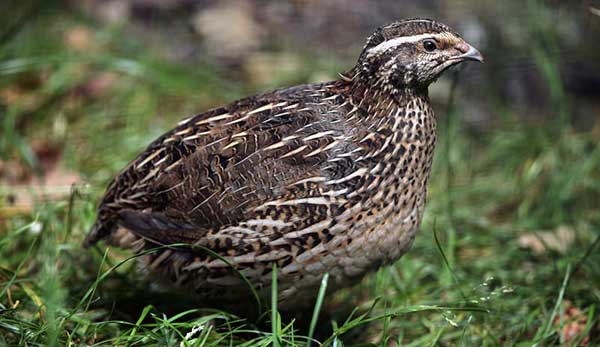

The beneficial effects of eggs on the human body
Due to their rich composition, quail eggs are beneficial for children, pregnant and lactating women, men suffering from sexual dysfunction.
The product helps to strengthen the immune system, therefore it is recommended in diets during illness, and for prophylaxis.
Containing a large amount of calcium and potassium, eggs are used for fractures, diseases of the joints, the musculoskeletal system, during the period of active growth of children. They are saturated with a nutritional composition that has a beneficial effect on the health of patients:
- diabetes mellitus;
- anemia;
- gastritis;
- stomach ulcer;
- tuberculosis;
- bronchitis;
- pneumonia;
- obesity;
- cholecystitis.
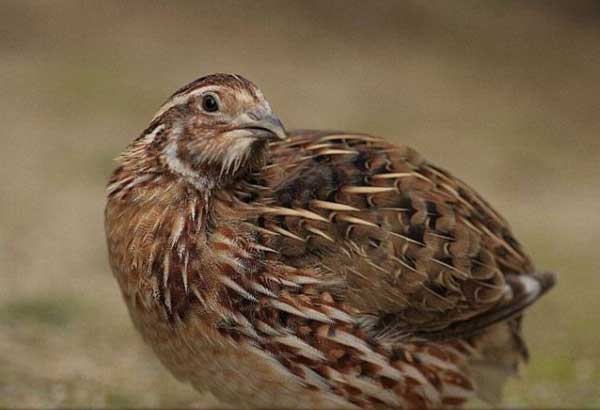

To whom and in what cases to use with caution
Quail eggs in limited quantities should be eaten by people with diseases of the gallbladder, severe liver damage, patients with diabetes mellitus, obesity, and allergy sufferers.
The widespread belief that quail eggs do not get infected with Salmonella is a myth. Like chickens, they need to be disinfected so as not to bring infection.Before use, rinse thoroughly with warm water and soap and boil for 10 minutes.
conclusions
- Sexually mature quail females usually begin to lay on the 40th day after hatching. On average, they produce up to 300 eggs per year. They carry one piece a day for 5-6 days in a row, after which they take a break for 1-2 days.
- A decrease in bird productivity occurs against the background of malnutrition, stress, disease, and lack of lighting in the poultry house.
- In young females, sick laying hens, as well as quails that do not receive enough vitamins and minerals from the feed, eggs with defects may appear: without shell, with large age spots or lime deposits on the shell
- For incubation, eggs of the correct shape are selected without visible shell defects. Too large eggs, samples with two yolks, interspersed in the white or yolk are not taken for these purposes. Only clean material is placed for incubation.
- You can eat quail eggs raw, boiled, fried and baked. A person is recommended to eat no more than 5 pieces per day, children - up to 2-3 pieces.
- The most productive breeds of quail are Estonian, English, tuxedo, marble. They are capable of producing up to 300 eggs per year when properly kept.
How to quickly increase egg production
Add bonemeal or fishmeal to your food to increase productivity. It is a good source of protein, which is a must in poultry feed. Each quail in your flock should receive 30 g of feed 3 times a day. Watch the vitamin and mineral content of your food. Do not allow the slightest deviation in the microclimate of the room in which the flock is kept. In addition to the obligatory cleaning of the birds, from time to time it is useful to put troughs with ash and sand for the hens. "Bathing" in the mixture, the birds clean the feathers. It is also a good prevention of skin diseases.
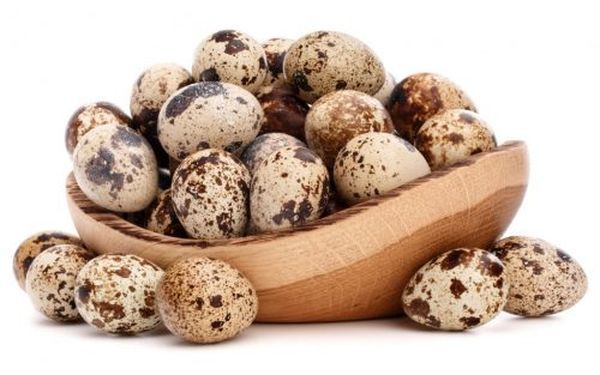

Eliminate frequent cage-to-cage transplants. Any change in environment is stressful and can reduce productivity. A good option would be a cage with a lattice bottom, under which you can lay the newspaper and change it as needed. This way, you will not disturb the birds by cleaning and keep it clean. Drinking bowls and feeders are also located on the outside of the cage, which makes them easy to access and eliminates the need to open the cage frequently.
From time to time, invite a veterinarian to examine the birds so that probable or already present diseases do not come as a surprise to you and receive timely and correct prevention and treatment.

